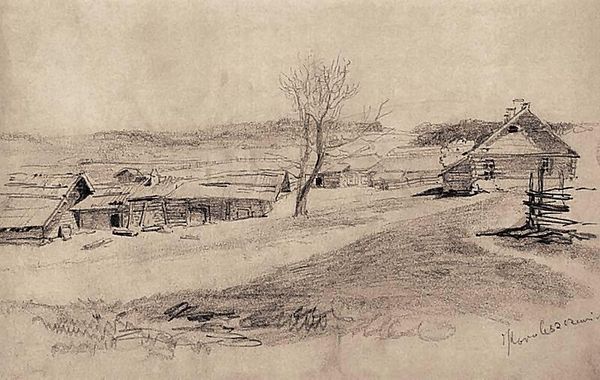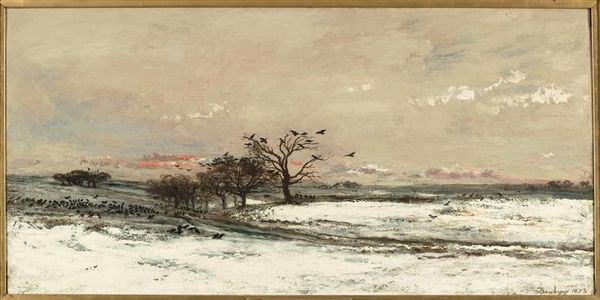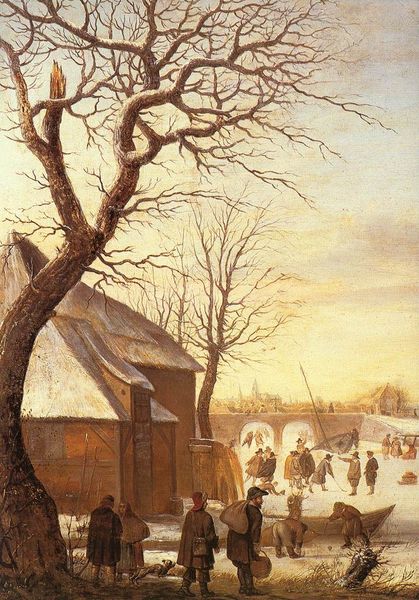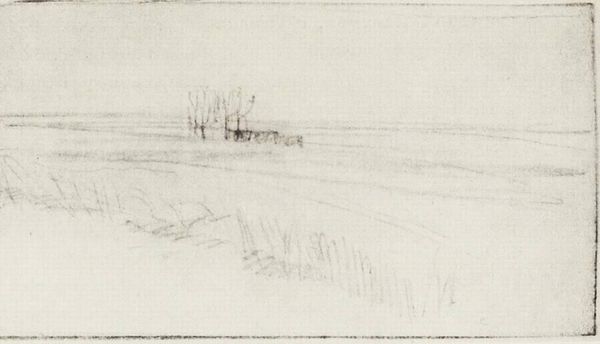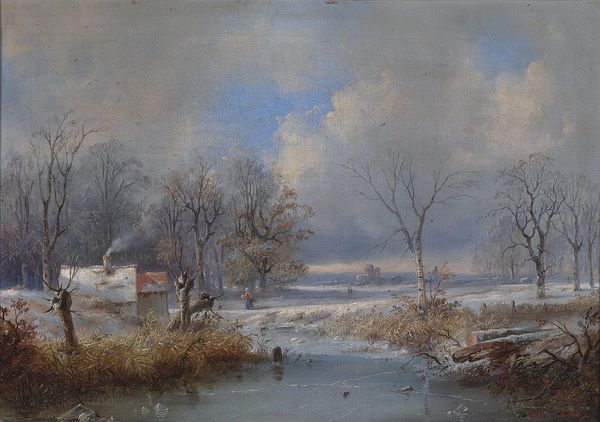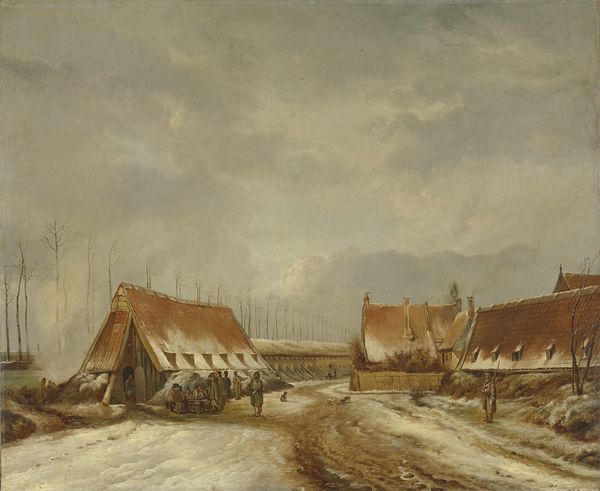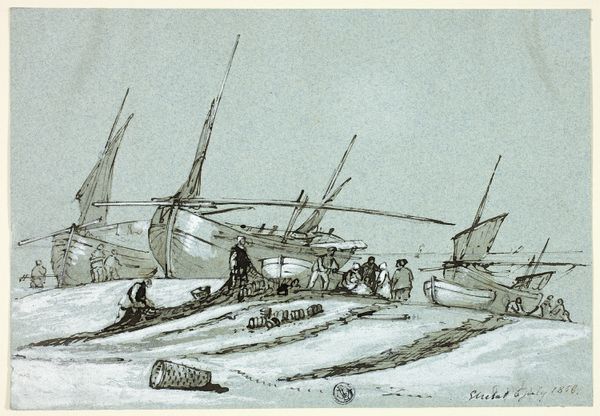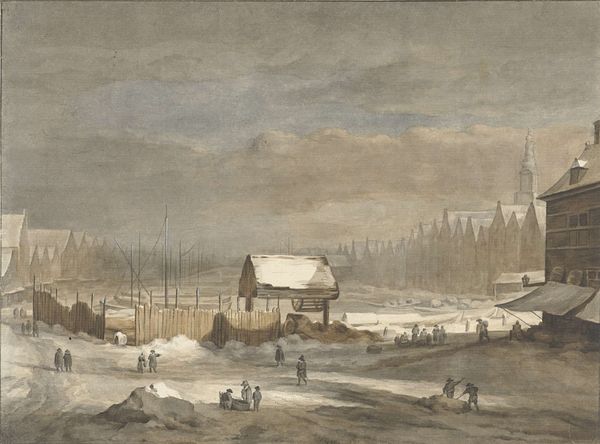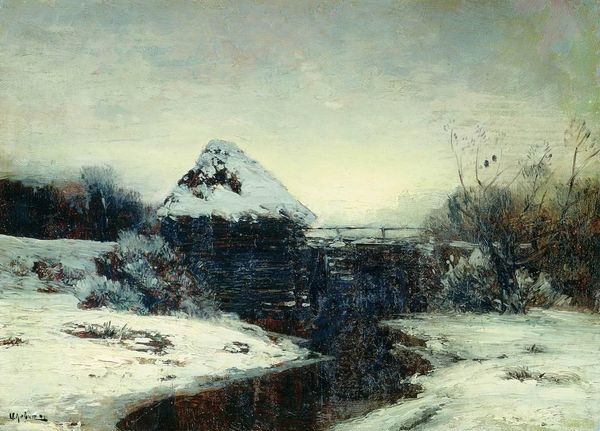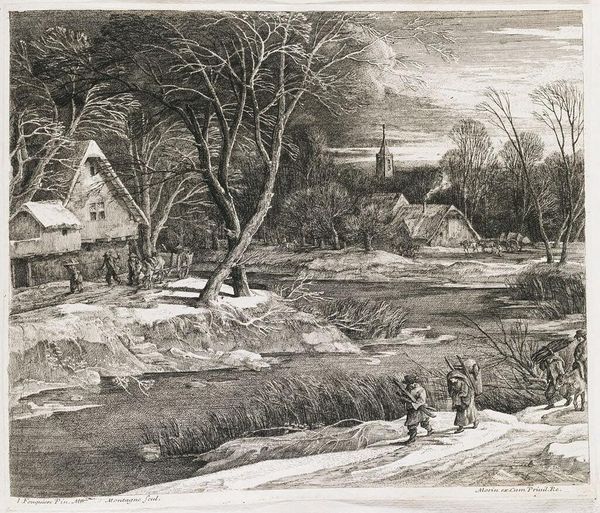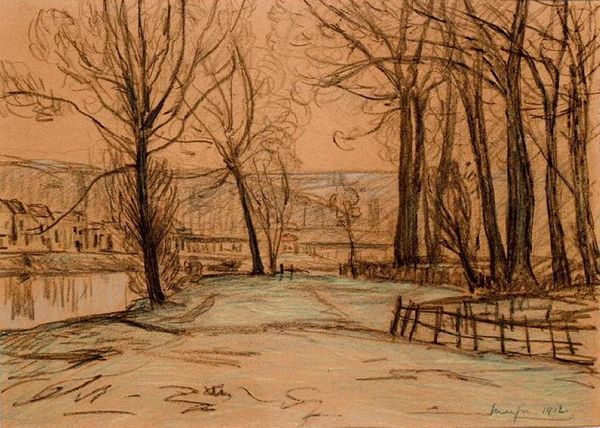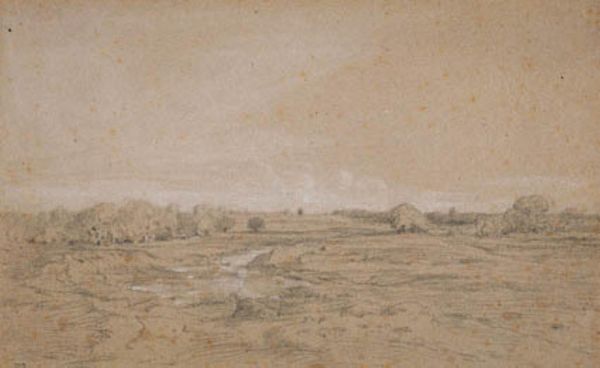
Copyright: Public domain
Curator: This oil painting from 1878 is titled "Village sous la neige (Vallée de la Meuse)," or "Village in the Snow (Meuse Valley)" and was painted by Périclès Pantazis. What are your initial impressions? Editor: The subdued palette evokes a quiet stillness. It’s as if the landscape is holding its breath under a heavy blanket of snow. Curator: Absolutely, Pantazis uses plein-air techniques and embraces Impressionism to capture this moment. I think the gray tonality hints at larger socio-political conditions of that era. One wonders, were these residents impacted in any ways during a very turbulent political time for Europe? Editor: Interesting point! It could reflect societal anxieties present at the time. Considering how this piece departs from ideal landscape of Romanticism to something very ordinary speaks of something bigger, too. Curator: And the location itself, the Meuse Valley, has always been at a cultural and political crossroads. This painting could then be read as Pantazis placing this marginalized region, literally frozen in time, into the art world and public's eye. Editor: I agree, thinking about location helps add context. I see that tension too – it feels Romantic in its grandeur but also realist with its humble subject. I keep thinking of gender in relation to art produced during this period. Is there any chance this scene, depicting such domestic life could also serve as reminder for women roles within society? Curator: That's a rich way of thinking about the work. In some circles it might be read as simply recording a certain rural folk life and perhaps some might overlook how Pantazis captures nuances beyond aesthetic and move towards this introspective social commentary. Editor: It gives the viewer an entry point to deeper layers, encouraging a conversation that goes beyond the canvas itself and considers representation. It underscores how historical contexts matter and shows this scene from long ago can spark critical engagement with modern issues of today. Curator: A final, poignant image with endless contextual possibility, indeed. Editor: Well, seeing how different perspectives matter makes this work stand out.
Comments
No comments
Be the first to comment and join the conversation on the ultimate creative platform.

